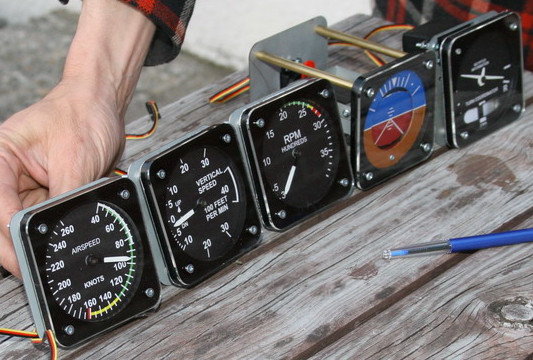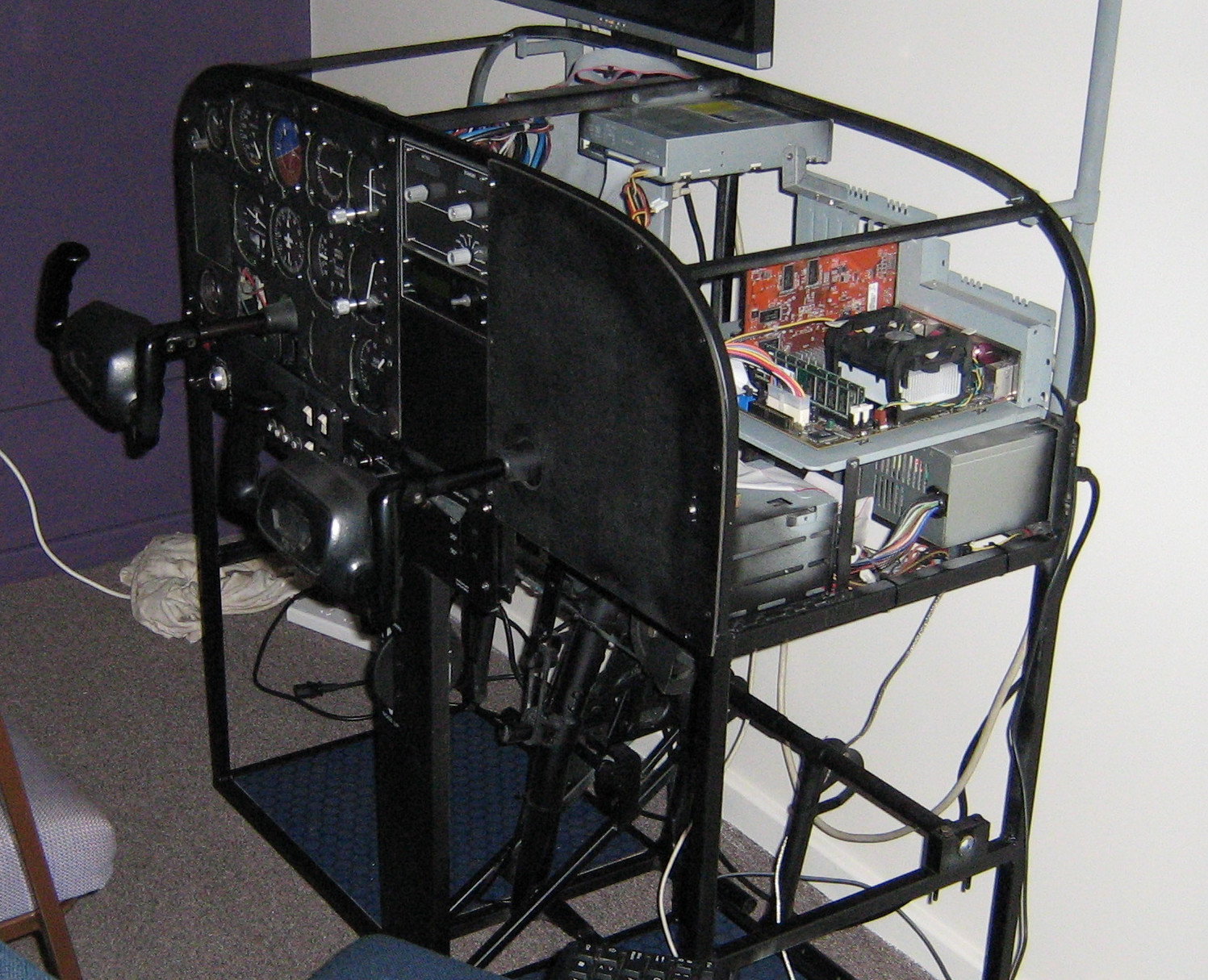I'm not in CASA country but (following on from some work I did, indirectly, for NASA) in the naughties I designed and constructed a C172 FTD for use as an IFR trainer by a commercial training establishment. While it'd take quite some time + work I see no reason why you couldn't construct one for home use. Following is a little info that may be useful:
Although not necessary (ie. you could easily construct your own) I used an original control column from a 172, and rudder pedals from a 140 or 160, the latter because they fitted more easily within the physical design parameters I'd set than the 172 pedals would have. Also original were various switches, and the throttle, mixture and carb heat controls. These were connected directly to an interface board, or to a pot that was itself connected that board, then to a computer. They could easily have been replicas, or even new originals, but for this prototype I used secondhand units that were available to me. These were either faulty or had been replaced in an a/c due to hour requirements, but were modifiable and usable for my purposes.
The frame (which was the exact size of a 172 cockpit), all the instruments, trim and flap controls, and the avionics stack were designed and/or constructed by me to conform to original. I have a colleague who modified original instruments in their design; that worked well too, but to my mind it was quite complicated work and as I was looking at producing these
en masse I needed a solution that was easily and inexpensively reproducible.
If I were building such a machine today I'd probably use a glass cockpit, which would be mechanically simpler than what I did back then (although, having gone through the initial design angst, it's simple to manufacture more 'steam' instruments), I'd also use hall effect sensors rather than carbon pots, and maybe refine one or two linkages etc. Otherwise I see no reason to alter the fundamental design to any significant degree.
The device was successful and was used by the establishment until they closed. It was also found to be effective in assisting with certain aspects of VFR student's flying, such as crosswind landings, and simple cockpit familiarity.
Below is an early photograph showing some of the instruments after I'd assembled them, and the prototype device itself during installation. The instruments were designed in AutoCAD and cut out of sheet steel with a CNC laser, they used servo or stepper motors to drive the pointer or background. LCD and LED displays were also used in various cases.
The photo of the device itself shows some of the internals, the frame, and the facia with most of the instruments installed, so should give a reasonable idea of what it was like and how you might construct one yourself. When properly installed this has cover panels and multiple screens etc. I also had it on a motion platform at one stage but this isn't really required for transfer of learning, and it made it somewhat more cumbersome.
 Aircraft instruments for Flight Training Device
Aircraft instruments for Flight Training Device
 Flight Training Device during installation, showing frame, some internals, and facia.
Flight Training Device during installation, showing frame, some internals, and facia.